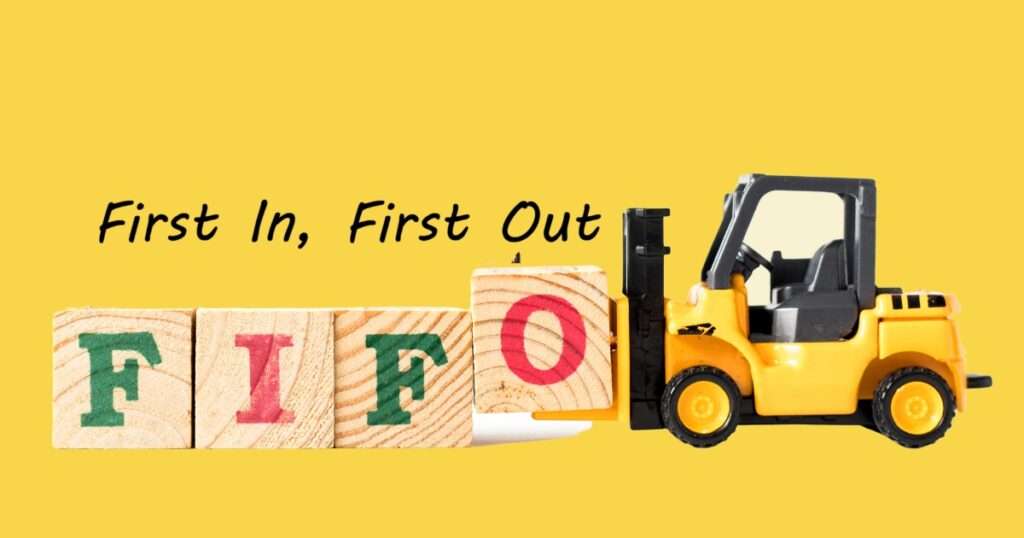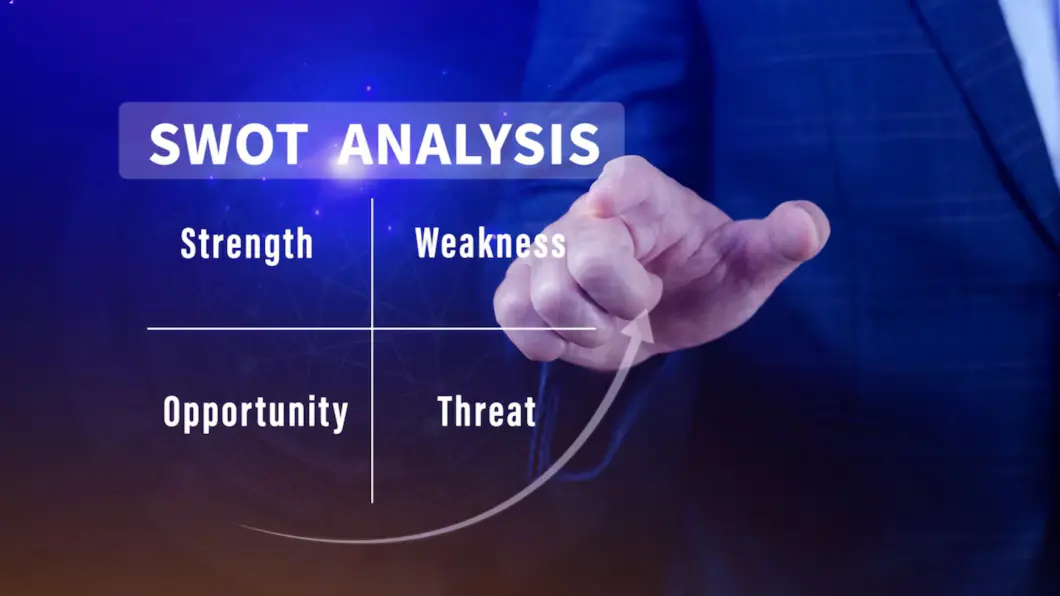Definition: The FIFO method is the most logical method to save inventory costs as it will sell the oldest products first and prevents goods from becoming obsolete over time.
What is FIFO Method?
The FIFO inventory valuation method can be expanded as first in, first out. It is a technique to assign value to the inventory. In this method, the good that is produced first is sold first. It is assumed that this method is theoretically the best inventory valuation method.
From a tax perspective, the FIFO method presumes that items with the oldest costs are added to the income statements’ cost of goods sold (COGS). And the rest of the inventory is added to the most recently produced or purchased goods..
FIFO Method in Inventory Management
As discussed above, in the FIFO method, the earliest goods purchased are removed first from the inventory. So the remaining items in the inventory will be incurred with the most recent costs. And when the inventory asset is recorded in the balance sheet there won’t be much difference and will be close to the most recent costs procured from the marketplace.
On the contrary, this inventory method goes against matching the historical costs with the current revenue and records it in the cost of goods sold(COGS). As a result, the gross margin doesn’t always reflect the right matching of costs and revenue.
The FIFO method is accepted by international financial reporting standards.
Also Read : What is ABC Analysis in Inventory Management System?
How to Calculate FIFO Inventory Management Method with Examples
Normally when the items are prepared for sale, items are assigned costs. If the FIFO method is implemented, then the costs are assigned based on what products arrived first.
The FIFO method is very useful as it helps to avoid obsolete inventory by selling the oldest goods first and managing the recent items in the inventory. To apply FIFO, you have to first determine the cost of your oldest inventory and multiply it by the number of units sold.
FIFO Formula
FIFO is applied using the Cost of Goods Sold (COGS) formula.
COGS = Starting Inventory + Purchases − Ending Inventory
For example, a company’s inventory purchase is as follows:
First batch of 100 items purchased at Rs. 90 per unit = Rs. 9000
Second batch of 100 items purchased at Rs. 100 per unit = Rs. 10000
The company sells 60 out of 200 items. As per FIFO, 60 items were sold at the earlier purchase price of Rs. 90 per unit. The total items remaining is 140.
Applying the COGS formula,
COGS for 60 items in the balance sheet = (100 x 90)+ (100 x 100) – (40 x 90 + 100 x 100) = Rs. 5400
The company later sells 50 items. In FIFO, the oldest items are sold first. So, 40 items left from the first batch are recorded at Rs. 90 per unit, and the 10 items from the second batch are recorded at Rs. 100 per unit. The total items remaining is 90.
Applying the COGS formula,
COGS for 50 items in the balance sheet = (40 x 90 + 100 x 100) + (0) – (90 x 100) = Rs. 4600
As there is no new purchase, the purchase has been kept at 0. The price paid by the company for the inventory fluctuates often. And the fluctuations in the prices must be taken into account for accurate inventory reporting.
Also Read : What is FSN analysis in Inventory Management?
What are the advantages of the FIFO Method?
Many businesses implement the FIFO inventory method as it is considered the trusted method when compared to the LIFO method. And it is the most widely used method to assess inventory value. Let’s discuss some of its advantages for the business.
- It is a widely accepted method globally and is one of the best techniques to assess a company’s inventory.
- Bookkeeping will be simplified and error-free with the use of this method. So it maintains the natural flow of inventory where the oldest goods are sold first and the newest inventory later.
- This method will contribute to avoid wastage. (as the oldest goods move out, there will be almost no wastage of items which is a good thing for increased revenue)
- The major benefit is to the financial statements, as it will become harder for them to be manipulated.
- It will help in yielding higher revenue to the business.
- This method is easy to use. As each of the items is recorded in order, it will be easier to apply principles by managing inventory costs for the newest purchases.
- In terms of software capability, the FIFO method can be applied to any accounting software with ease.
What are the disadvantages of the FIFO Method?
In comparison to other methods such as LIFO, the FIFO method can result in higher income tax for the businesses to pay as there is a large gap between the costs and profits. In case of inflation, the increased number is used for the cost of goods sold COGS calculation, instead of the actual costs.
Knowing the disadvantages of FIFO method is important to avoid its misuse.
- Higher taxes: Using FIFO when prices of raw material are rising will lead to lower COGS, which means higher profits reported in books, even though actual profit is low. Higher profits will increase tax liability for the business.
- Inaccurate inventory value: Older inventory costs do not accurately represent the current inventory costs. If a business is creating a budget to buy new inventory or buy insurance for securing inventory, FIFO cannot provide the right valuation for current inventory prices.
- Misleading financial figures: Unsold inventory bought at higher prices will increase the overall inventory value, thus increasing the current assets of the business. This can mislead stakeholders into believing that the company is financially stronger than it actually is.
Other Inventory Valuation Methods
Beyond FIFO and LIFO, there are other inventory valuations methods you should know about.
- FEFO (First Expired, First Out): While FIFO sells the oldest purchased items first, FEFO first sells the items nearing expiry date. This is especially useful in pharma, food and chemical industry, having products with limited shelf life.
- Weighted Average Cost: WAC method is used to average the cost of all inventory. This simplifies COGS calculation, but may not be suitable when prices fluctuate a lot.
- Specific Identification Method: Under this method, every individual product is assigned a cost based on its specific value. This is ideal for high-value or unique items, such as jewellery and artwork.
What is the difference between FIFO and LIFO Methods?
The LIFO method is the direct opposite of the FIFO inventory method. In the FIFO method, the oldest goods are sold first and in the case of LIFO, the most recent items are sold first.
The companies under the LIFO method, the corporate taxes are cheaper as it allows the recent products to be sold first.
Expensive goods are sold first like the LIFO method though the overall inventory is managed by the FIFO inventory management method.
Conclusion
In conclusion, the FIFO (First-In, First-Out) inventory management method is a widely adopted and effective approach for managing inventory in various industries. By following the principle of using the oldest inventory first, FIFO ensures that products are sold or used before they become obsolete or expire. This method helps businesses maintain accurate accounting records and minimize the risk of inventory obsolescence or spoilage.
FIFO provides several advantages to businesses. It allows for better cost control by accurately valuing inventory and reducing the risk of inflationary costs impacting the bottom line. Additionally, FIFO aligns with customer preferences for receiving fresh or recently produced goods, enhancing customer satisfaction and loyalty.
However, it’s important to acknowledge that FIFO has its limitations. It may not be suitable for all types of products, especially those with shorter shelf lives or where product quality deteriorates over time. In such cases, alternative inventory management methods like LIFO (Last-In, First-Out) or specific identification may be more appropriate.
Overall, FIFO remains a valuable tool for inventory management, providing businesses with greater control over their inventory, improved financial reporting, and enhanced customer satisfaction.
FIFO Method FAQs
1. Why is FIFO Method better for Inventory Management?
FIFO method helps to sell older stock first, thus reducing waste and financial loss. It also provides more accurate inventory costing, in line with the physical flow of goods.
2. What type of Business would use FIFO Method?
This method is widely used by companies with perishable items or those with expiry dates, such as food, chemical, pharmaceuticals, etc.
3. What is an Example of FIFO Method?
A departmental store uses FIFO by keeping the older breads in the front row and the newer stock at the back, to reduce waste.
4. How does the FIFO Method affect Financial Statements?
When the inventory costs are rising, FIFO helps to record cheaper, older stock first. This results in higher net income on the income statement as low-cost inventory reduces COGS. FIFO also increases inventory value on the balance sheet as high-cost inventory remains unsold.







